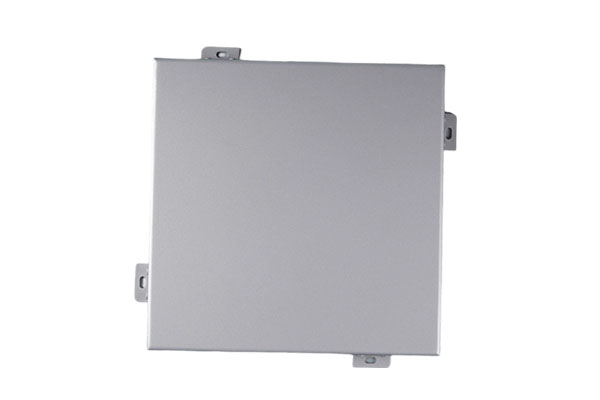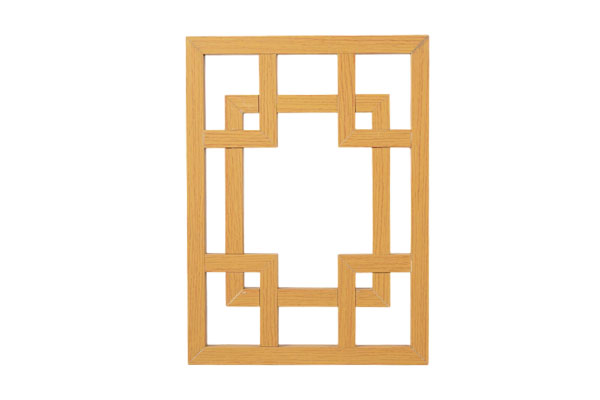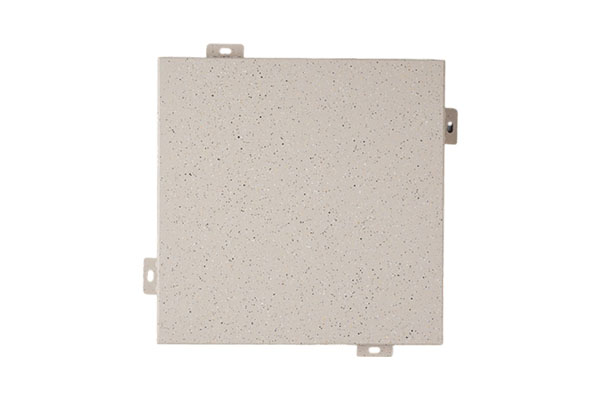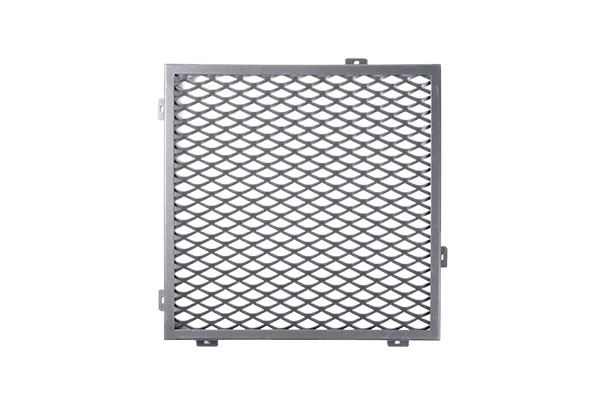How does conventional aluminum veneer adapt to various environmental challenges of building exterior walls?
Release Time : 2025-06-23
As a modern building exterior wall decoration material, conventional aluminum veneer has demonstrated excellent ability to cope with various environmental challenges with its excellent physical properties and diverse design flexibility. Whether facing harsh climatic conditions, complex architectural design requirements or long-term maintenance needs, aluminum veneers can provide reliable solutions to ensure that the building's appearance is as good as new and improve the overall building quality.
First of all, aluminum veneers have excellent weather resistance, which is the basis for its adaptation to various environmental challenges. Aluminum is a metal with high corrosion resistance by nature, and this property is further enhanced after surface treatment. Common anodizing or fluorocarbon spraying processes form a solid protective film on the surface of aluminum veneers, which effectively resists erosion by external factors such as ultraviolet rays, acid rain and industrial pollution. Even under long-term exposure to direct sunlight, rain erosion or salt spray in coastal areas, aluminum veneers can still maintain their original color and gloss without fading, powdering or peeling, thus ensuring the long-term beauty of the building's exterior walls.
Secondly, the wind pressure resistance of aluminum veneers is also one of its important advantages in adapting to complex environments. Modern architectural design often pursues unique shapes, and high-rise buildings are even more at risk of strong wind impact. Aluminum veneers can withstand large wind loads without deformation or damage through reasonable structural design and installation methods. For example, the use of high-strength aluminum alloy materials combined with advanced connection technology can ensure that each aluminum veneer is closely connected to form a stable overall structure. This structure not only enhances the overall strength of the building facade, but also improves the safety of the building in extreme weather.
Furthermore, aluminum veneers also perform well in fire resistance. As a non-combustible material, aluminum veneers themselves will not support combustion, and can play a certain barrier role when a fire occurs, slowing down the spread of the fire. In addition, a thermal insulation layer is usually added to the back of the aluminum veneer. Most of these materials also have good fire resistance, and together they build an effective fire barrier. This is of great significance for improving the safety level of buildings and protecting the lives and property of people.
It is worth mentioning that aluminum veneers also have good sound insulation and heat insulation effects. As people's requirements for living comfort continue to increase, building materials must not only be beautiful and durable, but also have excellent acoustic and thermal properties. The interior of the aluminum veneer can be filled with sound insulation cotton or other sound-absorbing materials to effectively reduce the impact of external noise on the indoor environment and create a quiet and comfortable living space. At the same time, the combination of aluminum veneer and thermal insulation materials can also significantly reduce heat conduction, reduce air conditioning energy consumption in summer and heating costs in winter, and achieve the goal of energy conservation and emission reduction.
In addition, the design flexibility of aluminum veneer also provides the possibility of adapting to different environments. Whether it is a flat surface, curved surface or special-shaped structure, aluminum veneer can be easily controlled. Designers can freely use their creativity to customize a unique facade effect according to the architectural style and functional requirements. For example, through cutting, bending, welding and other processes, aluminum veneers are processed into various shapes, combined with different colors and textures to create a rich and varied visual experience. This highly customized feature enables aluminum veneer to meet the needs of traditional buildings and can also be used in modern pioneer buildings.
In addition, the environmental protection and sustainable development attributes of aluminum veneer cannot be ignored. As a recyclable metal material, aluminum veneer has a small impact on the environment throughout its life cycle. From raw material collection to production and processing, and then to recycling and reuse after final disposal, aluminum veneer follows the principle of green environmental protection. Choosing aluminum veneer as a building exterior wall material is not only responsible for the current environment, but also contributes to future sustainable development.
Finally, in terms of maintenance and cleaning, aluminum veneer shows great convenience. Because its surface is smooth and not easy to be stained with dust and stains, daily cleaning can be restored to a bright and new look with a simple wipe. Even under high-altitude working conditions, the lightweight aluminum veneer is easy to disassemble and replace, reducing maintenance costs and difficulties. This undoubtedly extends the service life of the building's exterior wall and reduces the inconvenience caused by frequent repairs.
In summary, conventional aluminum veneer has successfully responded to various environmental challenges faced by building exterior walls with its excellent weather resistance, wind pressure resistance, fire resistance, sound insulation and heat insulation, design flexibility, environmental protection characteristics and easy maintenance. It not only enhances the appearance and internal quality of the building, but also creates a more comfortable and safe living and working environment for people. With the continuous advancement of technology and changes in market demand, I believe that aluminum veneers will play an important role in more fields and continue to promote innovative development in the construction industry.
First of all, aluminum veneers have excellent weather resistance, which is the basis for its adaptation to various environmental challenges. Aluminum is a metal with high corrosion resistance by nature, and this property is further enhanced after surface treatment. Common anodizing or fluorocarbon spraying processes form a solid protective film on the surface of aluminum veneers, which effectively resists erosion by external factors such as ultraviolet rays, acid rain and industrial pollution. Even under long-term exposure to direct sunlight, rain erosion or salt spray in coastal areas, aluminum veneers can still maintain their original color and gloss without fading, powdering or peeling, thus ensuring the long-term beauty of the building's exterior walls.
Secondly, the wind pressure resistance of aluminum veneers is also one of its important advantages in adapting to complex environments. Modern architectural design often pursues unique shapes, and high-rise buildings are even more at risk of strong wind impact. Aluminum veneers can withstand large wind loads without deformation or damage through reasonable structural design and installation methods. For example, the use of high-strength aluminum alloy materials combined with advanced connection technology can ensure that each aluminum veneer is closely connected to form a stable overall structure. This structure not only enhances the overall strength of the building facade, but also improves the safety of the building in extreme weather.
Furthermore, aluminum veneers also perform well in fire resistance. As a non-combustible material, aluminum veneers themselves will not support combustion, and can play a certain barrier role when a fire occurs, slowing down the spread of the fire. In addition, a thermal insulation layer is usually added to the back of the aluminum veneer. Most of these materials also have good fire resistance, and together they build an effective fire barrier. This is of great significance for improving the safety level of buildings and protecting the lives and property of people.
It is worth mentioning that aluminum veneers also have good sound insulation and heat insulation effects. As people's requirements for living comfort continue to increase, building materials must not only be beautiful and durable, but also have excellent acoustic and thermal properties. The interior of the aluminum veneer can be filled with sound insulation cotton or other sound-absorbing materials to effectively reduce the impact of external noise on the indoor environment and create a quiet and comfortable living space. At the same time, the combination of aluminum veneer and thermal insulation materials can also significantly reduce heat conduction, reduce air conditioning energy consumption in summer and heating costs in winter, and achieve the goal of energy conservation and emission reduction.
In addition, the design flexibility of aluminum veneer also provides the possibility of adapting to different environments. Whether it is a flat surface, curved surface or special-shaped structure, aluminum veneer can be easily controlled. Designers can freely use their creativity to customize a unique facade effect according to the architectural style and functional requirements. For example, through cutting, bending, welding and other processes, aluminum veneers are processed into various shapes, combined with different colors and textures to create a rich and varied visual experience. This highly customized feature enables aluminum veneer to meet the needs of traditional buildings and can also be used in modern pioneer buildings.
In addition, the environmental protection and sustainable development attributes of aluminum veneer cannot be ignored. As a recyclable metal material, aluminum veneer has a small impact on the environment throughout its life cycle. From raw material collection to production and processing, and then to recycling and reuse after final disposal, aluminum veneer follows the principle of green environmental protection. Choosing aluminum veneer as a building exterior wall material is not only responsible for the current environment, but also contributes to future sustainable development.
Finally, in terms of maintenance and cleaning, aluminum veneer shows great convenience. Because its surface is smooth and not easy to be stained with dust and stains, daily cleaning can be restored to a bright and new look with a simple wipe. Even under high-altitude working conditions, the lightweight aluminum veneer is easy to disassemble and replace, reducing maintenance costs and difficulties. This undoubtedly extends the service life of the building's exterior wall and reduces the inconvenience caused by frequent repairs.
In summary, conventional aluminum veneer has successfully responded to various environmental challenges faced by building exterior walls with its excellent weather resistance, wind pressure resistance, fire resistance, sound insulation and heat insulation, design flexibility, environmental protection characteristics and easy maintenance. It not only enhances the appearance and internal quality of the building, but also creates a more comfortable and safe living and working environment for people. With the continuous advancement of technology and changes in market demand, I believe that aluminum veneers will play an important role in more fields and continue to promote innovative development in the construction industry.







